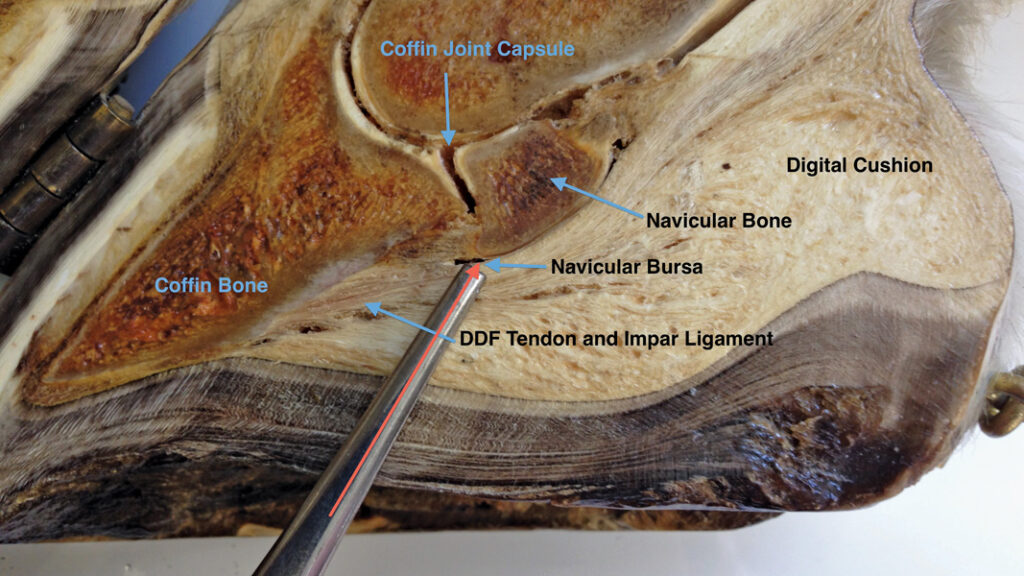
How to deal with Puncture Wounds
When dealing with wounds it is important to remember that even the most minor-looking lesion can cause problems. This is especially true with puncture wounds as they have the tendency to damage structures under the skin, such as joints and tendon sheaths, without looking as though they might cause that many issues.
Therefore, it is important to consult your vet if you are worried that your horse has sustained a puncture wound so that treatment can be initiated as soon as possible. The most common culprits are normally barbed wire, nails or sharp pieces of stone. Due to the problems associated with barbed wire injuries, it is generally recommended that horses are not kept in fields with this type of fencing. Furthermore, some insurance companies will not provide cover for horses kept in fields with barbed wire.
One of the most common sites for injury is the foot and this can lead to a number of problems. Normally they are associated with fairly severe lameness and in some cases non painful swelling within the tendon sheath. A high level of lameness following any form of wound is an indication that medical treatment is required.
If you decide that your horse requires veterinary treatment it is always best to leave any penetrating object in place until the vet arrives so they can assess the degree of the injury properly. There are a number of important structures with the hoof that can be damaged; these include the deep digital flexor tendon, the tendon sheath, the navicular bursa or the coffin joint. If one of these structures has been penetrated it might mean that the horse will require hospitalisation and potentially surgery. If none of these have been damaged then there is still the potential for an abscess to form due to local haemorrhage occurring. This still needs to be treated suitably under veterinary guidance as foot abscess left untreated can lead to a number of serious complications.
Puncture wounds can lead to serious complications further up the limb and along the body as well. There are a number of synovial structures in each leg that can be contaminated with bacteria if they are penetrated. Septic synovial structures generally are not noticeable until a couple of days after the horse obtains the wound. At first, there might not be an obvious lameness but this will become quite severe over the next 48 hours. Horses are often described as non-weight bearing and will have swelling of the affected area. Clinical signs can also include lethargy and inappetence.

Antibiotics are not helpful when dealing with these cases and instead, the only effective treatment requires flushing and cleaning the synovial structure under general anaesthesia. Another potential complication associated with puncture wounds, especially in the axilla (chest), is the development of subcutaneous emphysema. This is the build-up of air underneath the skin due to the increased mobility of this area and is a fairly painful issue. Most of these cases will require hospitalisation as well due to the need for systemic medication.
It is advisable that all horses should be up to date for the vaccinations, especially when dealing with wounds. Tetanus can be introduced through contaminated wounds and can cause very severe clinical signs that normally always lead to death. If a horse is not up to date when they acquire a wound the vet will administer tetanus anti-toxin. However, this does not provide the same level of coverage as vaccination so there is still the potential for the disease to develop.
If you are concerned about the vaccination status of your horse or the severity of a puncture wound it is always best to contact your veterinarian as soon as possible.
We thank Peter Fenton BVM&S MRCVS. From Peter Fenton Equine Vets Ltd for his expert advice in producing this article.
If this has been helpful why not take a look at some of our other guides that can point you in the right direction when looking for the best riding hats for any discipline, maybe your looking for some of the best budget gloves to use around the yard or looking for the best heavyweight turnout to keep your horse as dry as possible, better yet why not take a look at our best coat shine sprays to make your horse look a million dollars after their roll in the field. If those aren’t click-worthy take a look at our world-class equestrian news.


